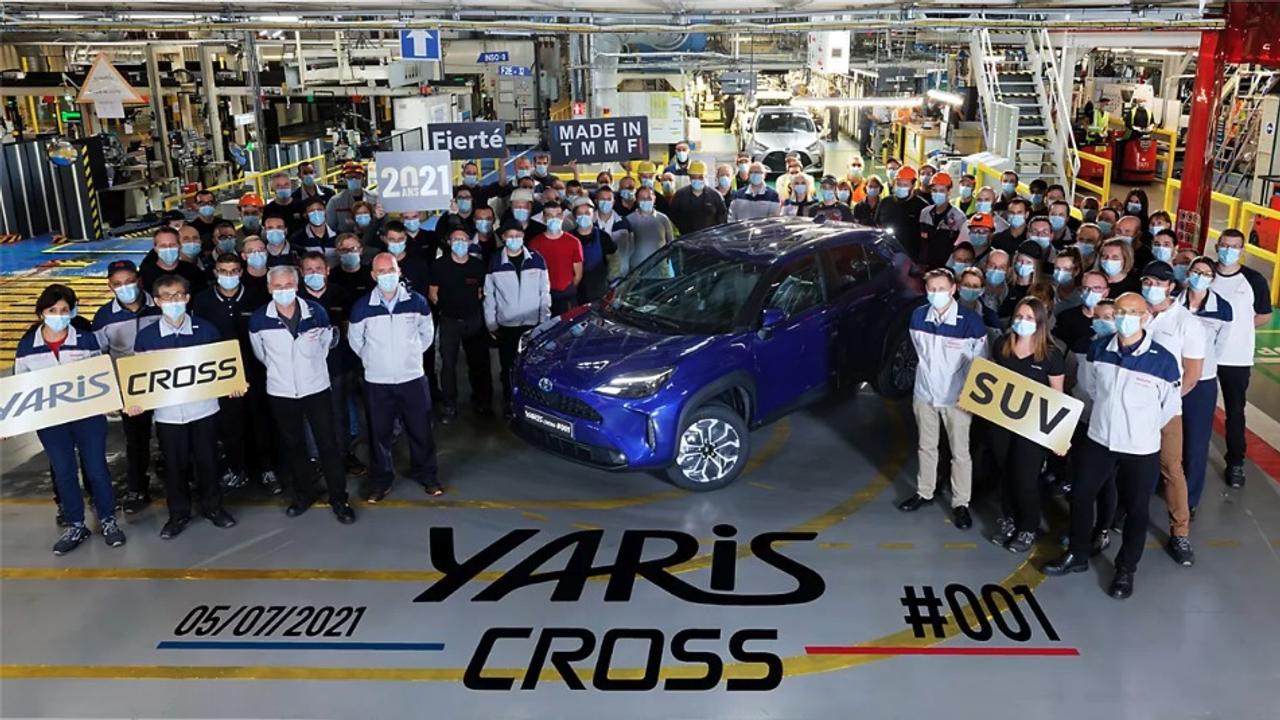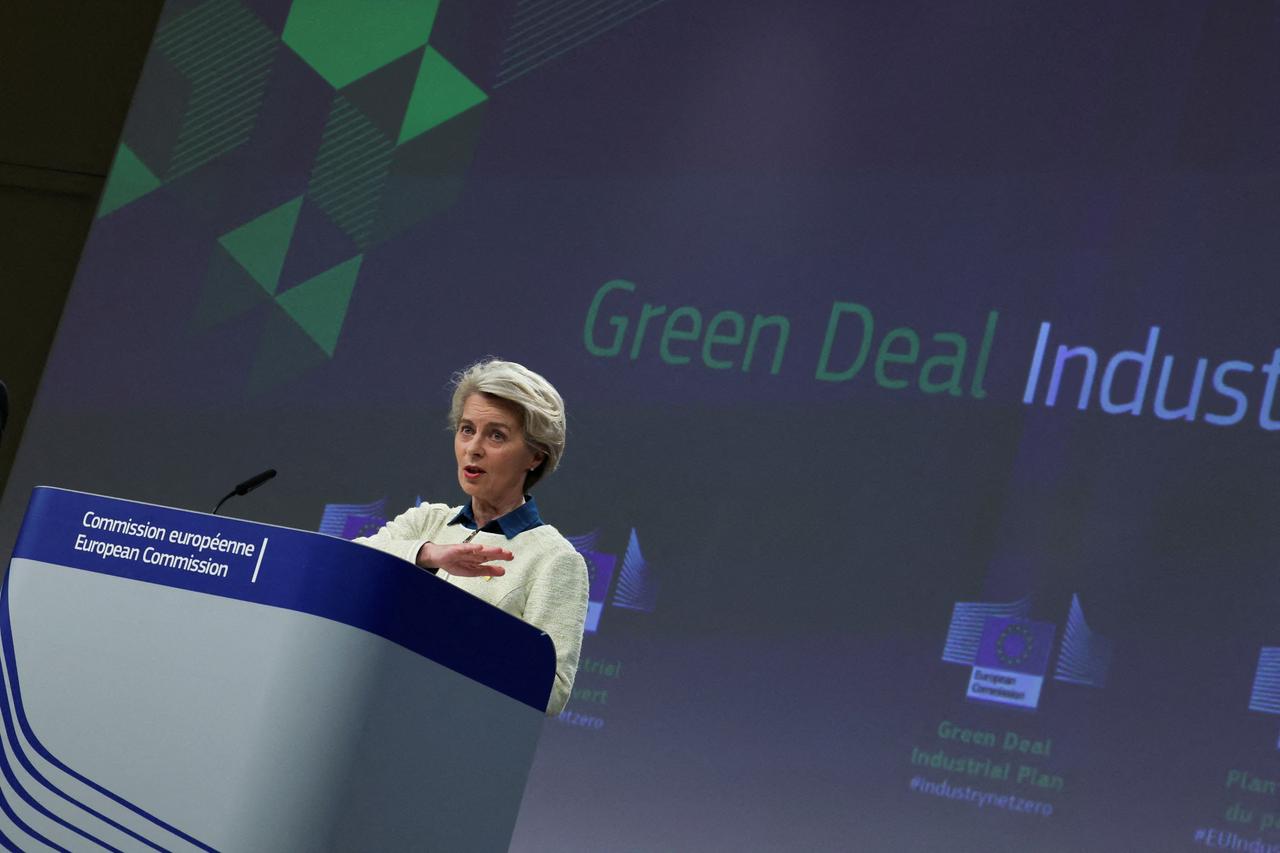Mercedes-Benz EV “EQS 580 4MATIC” exhibited at the Shanghai Motor Show. While German manufacturers are also focusing on BEV, the voice that the move to eliminate internal combustion locomotives at once in 2035 is hasty has finally materialized.
On July 14, 2021, the European Commission, the executive branch of the European Union (EU), released a “policy document (communication) of comprehensive legislation on climate change”. Among them, the EU announced a policy to limit new vehicle registrations from 2035 to so-called zero-emission vehicles (vehicles that do not emit greenhouse gases such as carbon dioxide while driving).
Zero-emission vehicles include electric vehicles (EV) and fuel cell vehicles (FCV), but the EU actually has EVs in mind. This European Commission proposal (hereinafter referred to as the 2035 EV Bill) will reach final agreement among the European Commission, the European Parliament and the Council in October 2022, and will be enacted on February 14, 2023. Adopted by the European Parliament, an institution.
All that remained was approval at the Council of Ministers (a policy coordination body composed of ministers from each EU country) scheduled for March 7, but this meeting was postponed at the last minute.German Minister of Transport and Digital Volker Wissing is here“We will not support the bill unless zero-emission vehicles include internal combustion engine (ICE) vehicles that run on e-fuel only,” it said.It’s for
Advertisements
Germany’s “disapproval” background… Why is “e-fuel” the key?
European Commission President Ursula von der Leyen launches a communication on the EU’s ‘Green Deal Industrial Plan’ on February 1.
E-fuel is a synthetic fuel that uses hydrogen derived from renewable energy. Carbon dioxide (CO2) is emitted during combustion, but on the other hand, because CO2 is used in the production process,Subtracting the amount of CO2 emitted and absorbed, it becomes virtually zero.It can also be used with existing gasoline and diesel vehicles.There is On the other hand, there is a problem of high production costs due to poor manufacturing efficiency.
In fact, German automobile manufacturers represented by Porsche are trying to promote the use of e-fuel. With e-fuel, existing production lines for gasoline and diesel vehicles can be maintained. For this reason, the Free Democratic Party (FDP), which participates in the Scholz coalition government, emphasizes the use of e-fuel from a pro-business standpoint. Transport Minister Wishing is from the FDP.
European Commission President Ursula von der Leyen tried to persuade Transport Minister Wissing and FDP leader Christian Lintner, who appears to have given up. Commissioner von der Leyen continues to persuade. This is because the 2035 EV bill will not be approved by the Council of Ministers unless Germany votes in favor.
Neither Italy nor Poland agreed to the bill.
Voting of the Council of Ministers is carried out by qualified majority.in short”Consent of at least 15 of the 27 EU countries is essential.”and the”15 countries account for more than 65% of the EU population”There is a need. If only Germany opposes, the 2035 EV bill will be approved, but the problem is that there are other countries besides Germany that have not agreed to this bill.

Italian flag.
First, Italy opposes the 2035 EV bill. In addition to its pro-business stance, Italy’s Meloni right-wing coalition emphasizes the negative impact of the EV shift on jobs. The Meloni administration’s position is that the shift to EV should be done cautiously, as the conventional gasoline and diesel production lines will no longer be needed and jobs will be lost.

Polish flag.
In addition,Central and Eastern European powers Poland dissenting, Bulgaria abstainingIt seems The combined population of Germany, Italy, and Poland is about 180 million, and the population of the EU as a whole is about 450 million, so the total population of the four countries exceeds 35%. In other words, the 2035 EV Bill will be rejected by the Council of Ministers.
Deep-rooted “opposition to hasty EV shift”
What I would like to stress here is that basically, “the countries that are cautious about the 2035 EV bill are not against the EV shift per se.” Although he supports the EV shift itself, he questions the timeline of its completion by 2035. In other words, it is a hasty and unrealistic position.
European auto industry associations have taken a similar position.
Groups such as the European Automobile Manufacturers Association (ACEA) and the European Auto Parts Industries Association (CLEPA) also remain cautious about the timeline for the shift to EVs. The EV shift is a solid megatrend in the EU, but it is a fact that should be properly understood that there are quite a few cautious opinions about how the timeline should be.
The Recurring Debate Between Economic and Environmentalists
The 2035 EV Bill was originally being amended by the largest, center-right European People’s Party Group (EPP) when the European Parliament voted in favor in June 2022. Concretely, the EPP proposed to lower the target for zero-emission vehicles in 2035 from 100% to 90%, and to not specify when to achieve 100%.
The EPP focused on the economy, but it did not necessarily focus only on businesses. It is important to consider the jobs that may be lost in the EV shift.
In the end, when the European Parliament voted in June 2022, the opinion of the environment-oriented faction led by the Greens/EFA, an environmental faction, won, but there was opposition from the economy-oriented faction. Remains strong.
In Germany, the economy-focused FDP is cautious about the 2035 EV bill, but the environment-focused Alliance 90/Green Party (B90/Grünen) is in favor of it, and there is disagreement within the cabinet. The center-left Social Democratic Party (SPD), which wants Chancellor Scholz, also ostensibly agrees, but it is a delicate position because it is necessary to consider the workers’ organizations that are the support base.
The biggest reason why the 2035 electrification law is being repeatedly debated between economic and environmentalists is probably the lack of coordination by the European Commission.
The European Commission, which emphasizes decarbonization, is burning with ambition to seize supremacy in the global megatrend of EV shift, but it seems that this has led to impatience and lack of coordination.
And in the end, the timeline setting of “100% EV conversion by 2035” was still unrealistic. It was established in line with the decarbonization strategy “fit for 55” (a policy package to reduce greenhouse gas emissions by 55% or more compared to 1990 levels in 2030). I couldn’t deny the impression that numbers were the starting point.
Ultimately, a compromise is expected to be reached, but the Japanese manufacturer’s “two-front tactic” was a realistic solution

The Yaris Cross is one of the models that Toyota is focusing on selling to Europe. A hybrid model is also available. On January 16, Toyota announced that of the 1.03 million units sold in Europe for the full year of 2022, the Yaris and Yaris Cross hybrid vehicles each sold well, with over 140,000 units sold.
Since the EU is accustomed to coordination, the 2035 EV Bill will eventually be approved. A compromise may be reached to include e-fuel in the concept of zero emissions so that Germany can end its spear. However, the reality is that there is no prospect of when the European Commission and ministers will reach a compromise.
Already, 10% of new cars in the EU are EVs. It can be said that it has spread steadily, but in order to spread it to the next level, in addition to the development of infrastructure such as charging points, it is necessary to overcome various issues such as the development of the used car market and the market development in low-income countries. . It is not certain that all these challenges can be overcome in the 13 years to 2035.
The EV shift may be suitable for decarbonization, but the current turmoil in the EU can be said to be a good opportunity to reaffirm that it is only a means to that end.
Japanese manufacturers are also working hard to develop and produce models in anticipation of the global shift to EVs. On the other hand, it has strengths in electric vehicles such as hybrids (HVs) and plug-in hybrids (PHVs), and continues to explore decarbonization along these lines.
The two-pronged strategy of Japanese automakers to pursue electric vehicles such as HVs and PHVs while increasing the production of EVs seems to have been a realistic solution.
Source: BusinessInsider
Emma Warren is a well-known author and market analyst who writes for 24 news breaker. She is an expert in her field and her articles provide readers with insightful and informative analysis on the latest market trends and developments. With a keen understanding of the economy and a talent for explaining complex issues in an easy-to-understand manner, Emma’s writing is a must-read for anyone interested in staying up-to-date on the latest market news.

